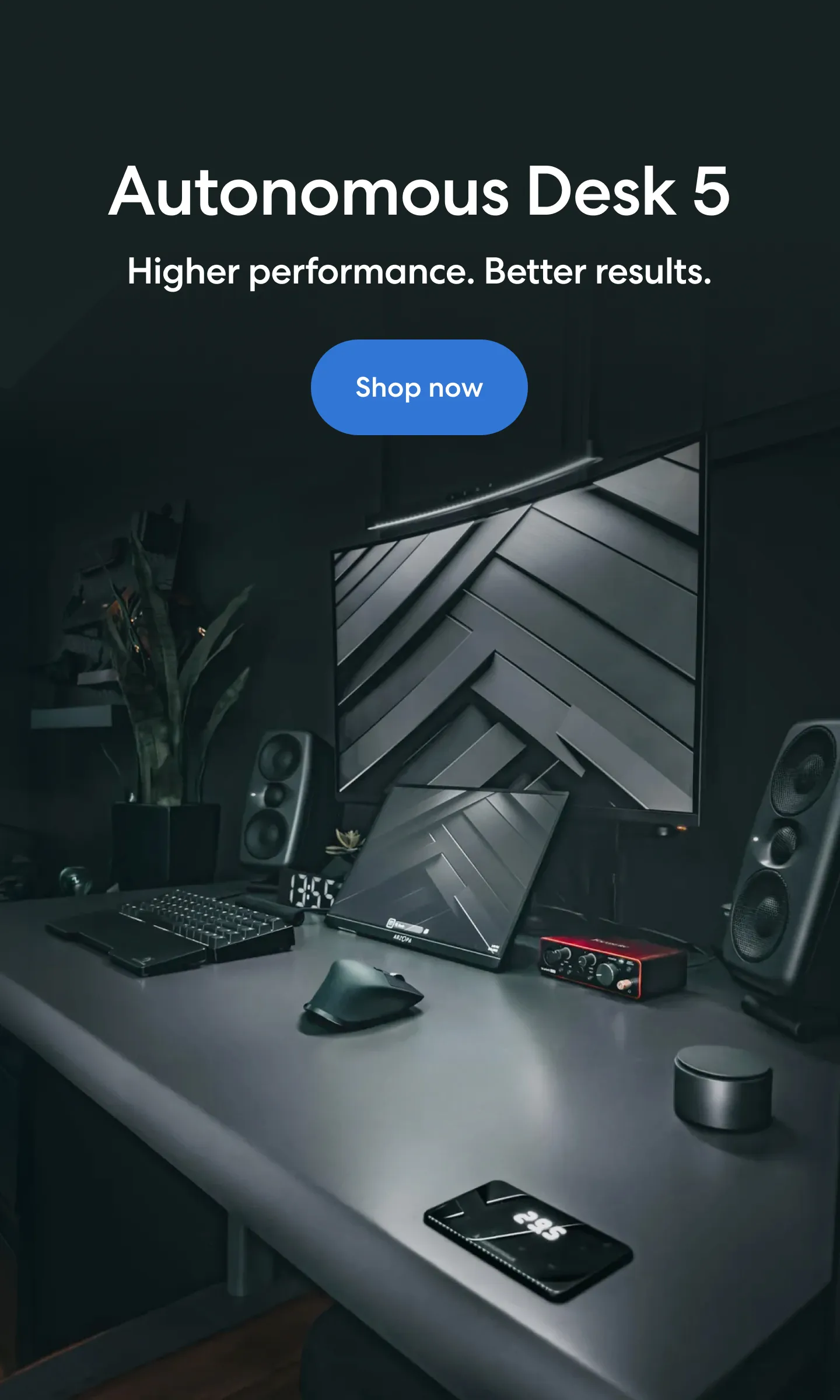.webp)
A Guideline To A Productive Virtual Office Setup
Table of Contents
Remote work has gone from an emergency response to a long-term strategy. For freelancers, digital teams, and even enterprise-level businesses, a solid virtual office setup is no longer optional—it’s foundational. Having the right virtual office setup is essential for staying productive, connected, and comfortable.
In this guide, we’ll walk through everything you need to build a professional, reliable virtual office setup—from hardware and software to smart habits that make working online actually work.
What Is A Virtual Office Setup?
A virtual office setup is a combination of digital tools, hardware, and workspace organization that lets you do your job from anywhere without needing a traditional office. It’s not just working from your couch with a laptop—it’s a fully optimized system that supports communication, collaboration, and focus.
Unlike a physical office that relies on being in the same place, a virtual office exists entirely online. Your meetings happen on Zoom, your files live in the cloud, and your desk might be in your living room, a coworking space, or even a camper van.
Whether you’re an individual contractor or a startup founder, learning how to set up a virtual office business that functions like a traditional workspace, minus the rent, is a game-changer.

Core Components Of A Virtual Office Setup
Setting up a virtual office doesn’t mean just grabbing your laptop and hoping for the best. A strong setup blends the right tools, environment, and infrastructure to keep you efficient, connected, and productive—no matter where you work from.
Let’s break it down into the essentials:
1. Hardware Essentials
From high-speed internet to professional webcams, investing in quality gear is a must when you create a virtual office that supports video calls, file sharing, and uninterrupted focus.
If you're planning how to set up a virtual office business, make sure each team member has access to ergonomic equipment and stable connectivity.
- Laptop or Desktop:
The core of your workstation. If you’re in graphic design, video editing, or software development, you’ll need a high-performance machine with ample RAM and GPU power. For general business tasks, a modern mid-range laptop with a solid processor and SSD will suffice.
- Webcam & Microphone:
In the age of video conferencing, clear visuals and audio make a huge difference. A 1080p external webcam paired with a USB condenser mic or quality headset not only makes you look more professional but also helps others hear you.
- High-Speed Internet:
Your workflow relies on a stable, high-speed internet connection. Aim for at least 100 Mbps download and 10 Mbps upload for video calls and file sharing. Consider a backup mobile hotspot or a dual-WAN router if uptime is critical to your work.
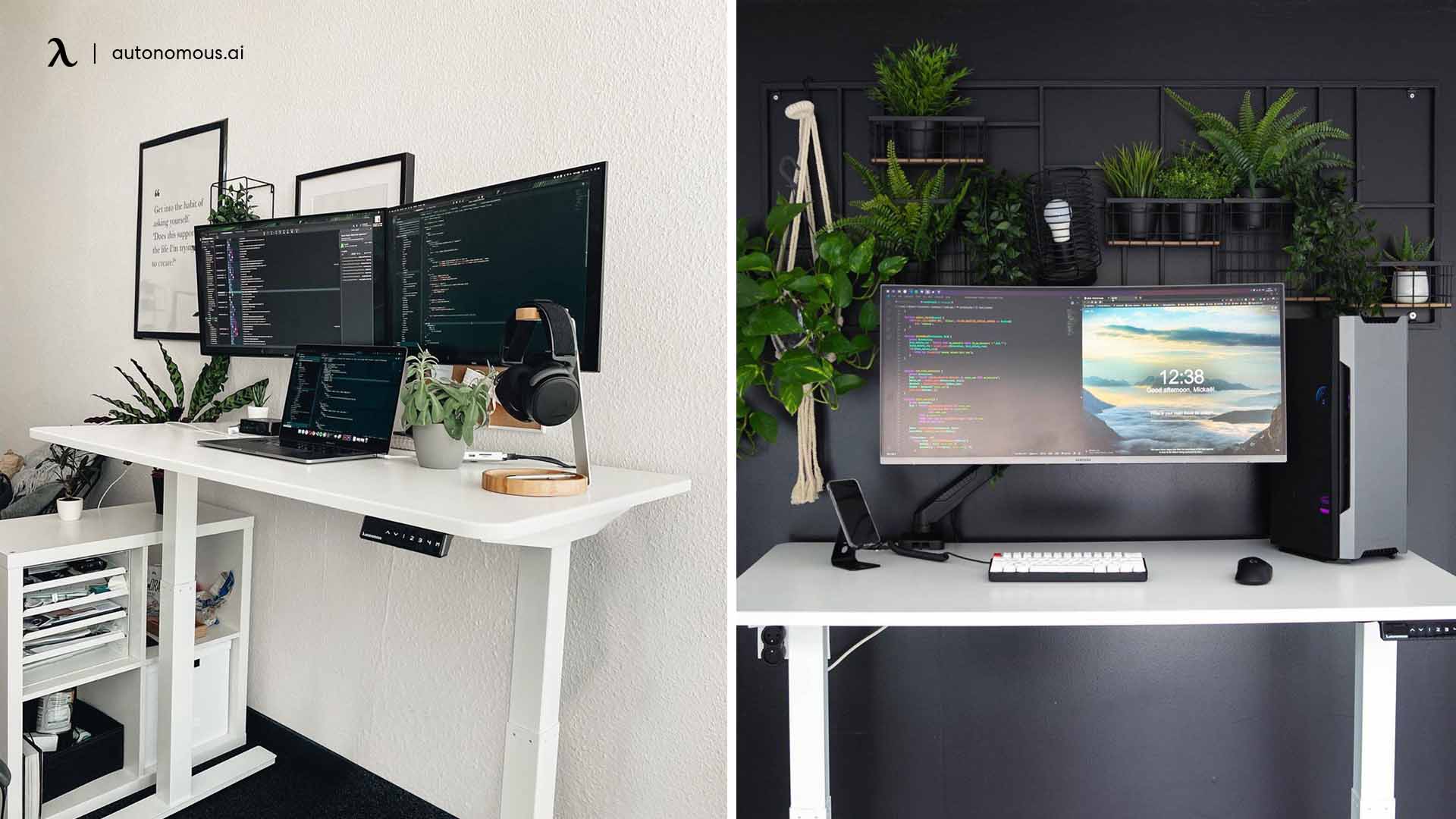
2. Software Stack
Whether you're managing a solo practice or need to create a virtual office with multiple collaborators, your software stack should include:
- Communication Tools:
Slack, Zoom, Google Meet, or Microsoft Teams are vital for chatting, calling, and meeting virtually. Choose the one your team is most comfortable with.
- Project Management:
Notion, Asana, Trello, or ClickUp allow you to assign tasks, track progress, and manage workflows in one place. These project management tools create accountability and transparency.
- File Sharing:
Services like Google Drive, Dropbox, or OneDrive offer version control and real-time collaboration. You no longer need to email files back and forth—just share a link.
- Security Apps:
If you want to create a virtual office that's organized and secure, you’ll also need password managers, VPNs (e.g., NordVPN or ProtonVPN), password managers (like LastPass or 1Password), and two-factor authentication apps to keep your data safe and your identity secure.
For businesses, choosing reliable enterprise VPN solutions adds an extra layer of protection, ensuring that company information and remote connections remain private and encrypted.
It’s also important to understand VPN privacy policies to make sure the services you use don’t log activity or share data with third parties.
3. Cloud Infrastructure
When you’re considering how to set up a virtual office business, centralizing everything in the cloud is non-negotiable. Cloud-based desktops, shared drives, and version control tools allow your team to access work from anywhere, at any time.
- Virtual Desktops:
Platforms like Amazon WorkSpaces or Windows 365 allow you to access a secure cloud-based desktop from any device. This is especially useful for teams that work across different hardware setups.
- Version Control:
Developers and content creators can use GitHub or GitLab to manage code or collaborate on documents, ensuring that everyone works on the latest version.
- Cloud Backup Solutions:
Regular cloud backups using services like Backblaze or iDrive can protect your work in case of hardware failure.
4. Virtual Office Platforms
For startups and distributed teams looking to create a virtual office that feels more connected, platforms like Gather or Sococo simulate the in-office experience online. They're useful for casual collaboration, team bonding, and real-time visibility.
- Tandem or Pragli replicates that “tap on the shoulder” interaction for quick conversations.
- Gather or Sococo offers a visual office map with avatars that help simulate physical presence and informal collaboration.
If your team misses the energy of an office, these tools can bring back some of that vibe—even when you’re continents apart.

Setting Up Your Virtual Office At Home
Your home office setup ideas should reflect the professionalism of a real office. If you’re preparing to create a virtual office that clients and colleagues will take seriously, here’s what to consider:
1. Choose A Dedicated Workspace
If you're learning how to set up a virtual office, start by defining your workspace boundaries. Pick a quiet, distraction-free area in your home. Ideally, it should have:
- A door for privacy (if possible)
- Access to natural light
- Proximity to power outlets and internet access
Pro Tip: Even if you don’t have a full room, a defined workspace (like a desk partition or converted closet) can increase productivity. You can explore our guide on how to create a productivity desk setup to fuel your desk inspirations. Make sure your work area has access to outlets, ventilation, and a strong Wi-Fi signal.
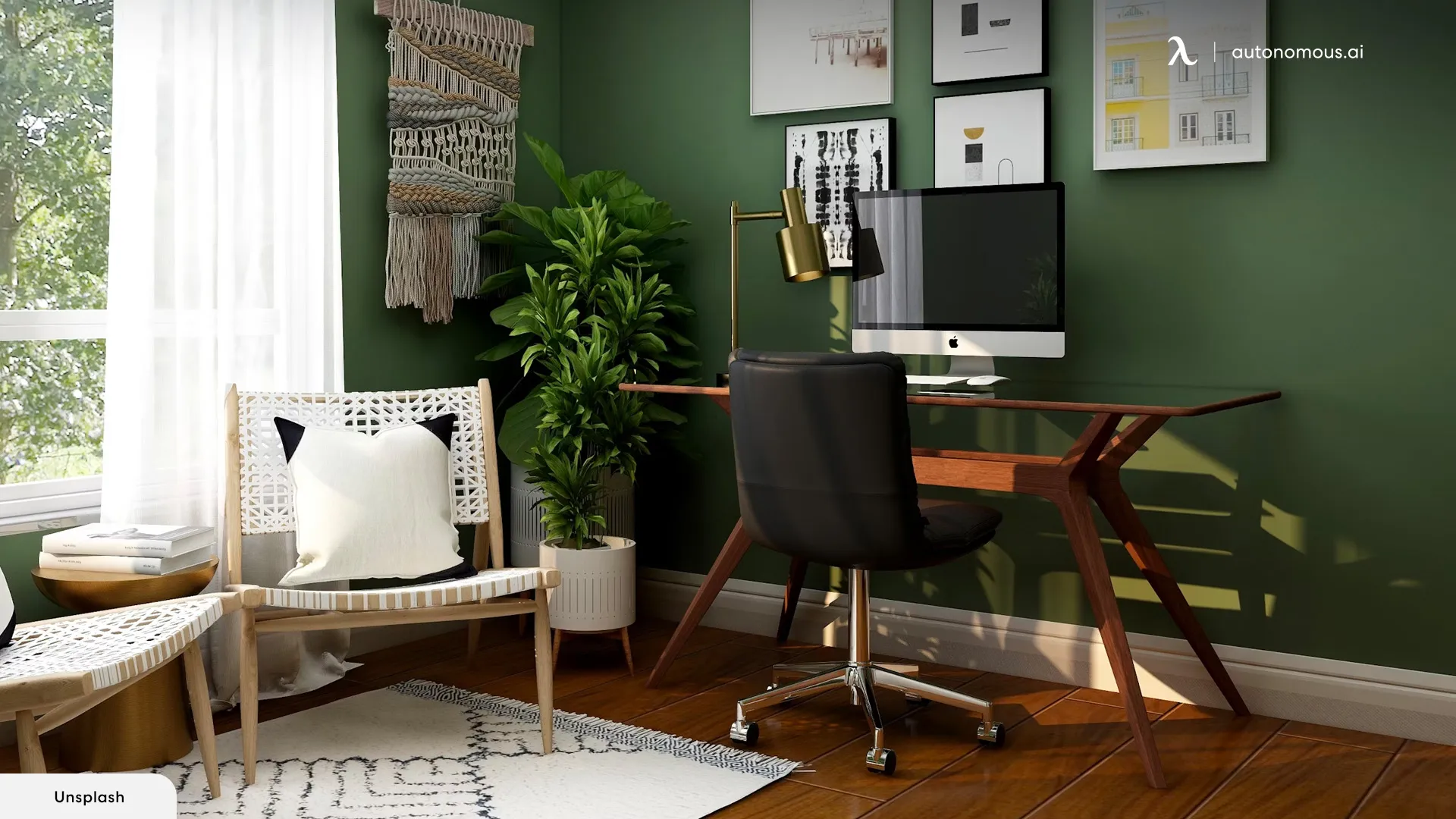
2. Lighting And Video Call Setup
Lighting affects not only how you look on calls but also your mood and energy levels. For anyone aiming to create a virtual office, investing time in understanding the proper lighting for computer use and money on a proper webcam is key for clear, confident communication.
- Natural Light: Position your desk near a window to take advantage of sunlight—it boosts alertness and reduces eye strain.
- Artificial Light: Use a ring light or adjustable LED desk lamp to evenly illuminate your face during meetings. Avoid having a bright light directly behind you.
Maintain a tidy or neutral background, or set up a retractable screen behind your desk. Many apps also offer customizable virtual backgrounds.
Pro Tip: Face the light directly or at a slight angle. Avoid having windows directly behind you, which can cause unwanted glare.

3. Soundproofing & Distraction Control
Work from home means dealing with distractions—barking dogs, kids, neighbors, traffic. A quiet virtual office setup shows professionalism and helps you stay engaged, especially in meetings or client calls.
- Use noise-canceling headphones to stay focused during calls.
- Add soft furnishings like rugs or curtains to absorb sound.
- Consider acoustic panels or white noise machines for added noise control.
4. Smart Tech Integration
Automating simple tasks reduces context-switching and saves mental energy for the work that matters.
- Smart Plugs: Set up your entire desk to turn on or off with one voice command or timer.
- Voice Assistants: Use Alexa or Google Assistant for quick reminders, timers, or light control.
- Smart Lighting: Adjustable brightness and color temperature can match your work mode—cool light for focus, warm for winding down.
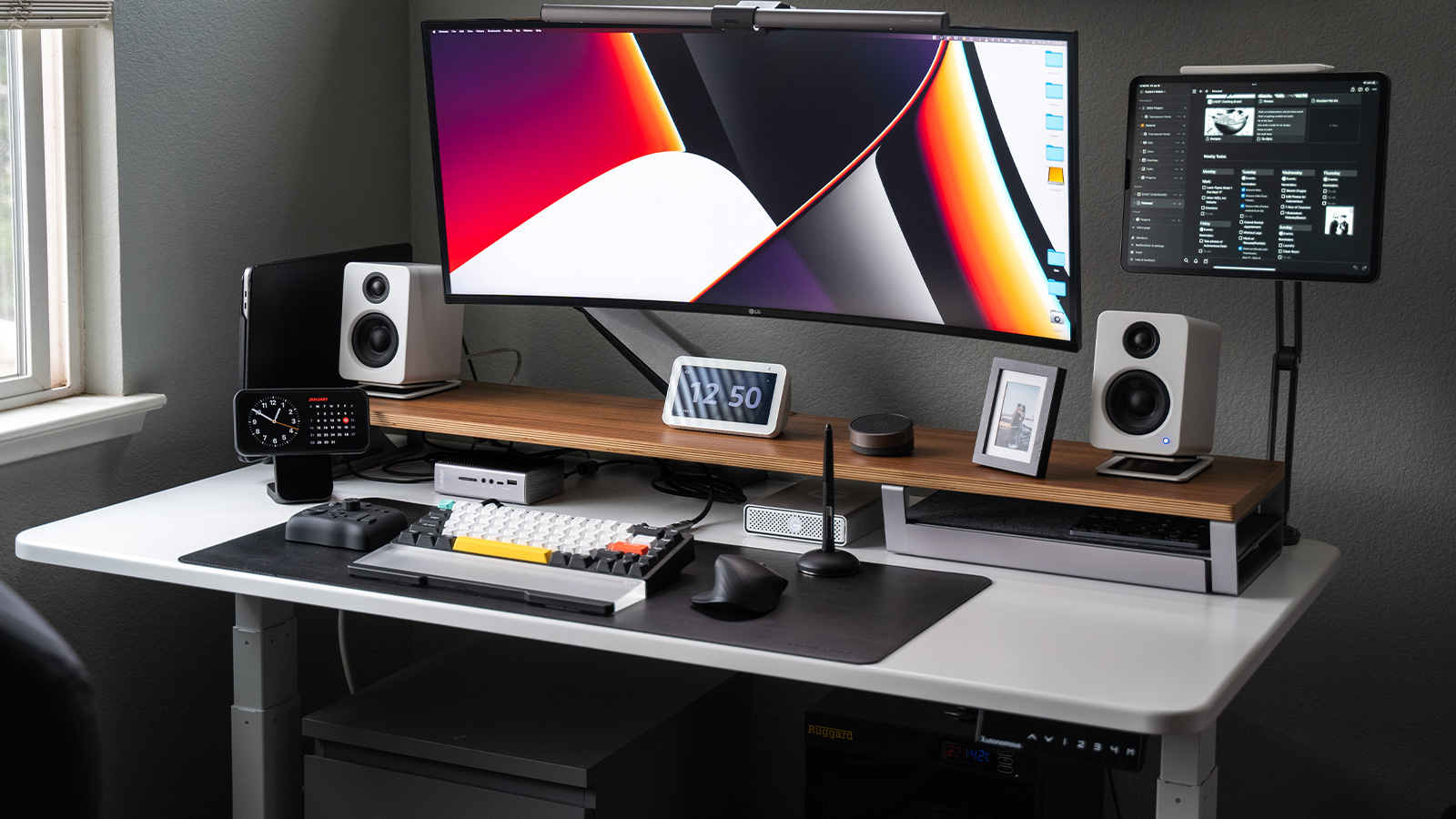
5. Workspace Ergonomics
One of the most overlooked aspects of any virtual office setup is comfort. If you’ll be working for 6–10 hours a day, ergonomic setup isn’t optional—it’s essential. Proper ergonomics increases productivity, reduces fatigue, and prevents repetitive strain injuries.
- Chair: Choose an ergonomic office chair with lumbar support, adjustable armrests, and breathable fabric or mesh to help maximize your comfort for all day long.
- Desk: A standing desk lets you switch between sitting and standing to stay active and avoid stiffness. If you’re planning a remote workstation, exploring a complete home office design with a standing desk can give you practical inspiration for building a setup that’s both functional and health-focused.
- Monitor Positioning: Your monitor should sit at eye level, about an arm’s length away.
- Accessories: Use a keyboard tray, wrist rest, footrest, or a standing desk mat to reduce muscle strain and enhance active movement.
A well-designed workspace not only prevents injury, it also boosts your concentration and energy throughout the day.
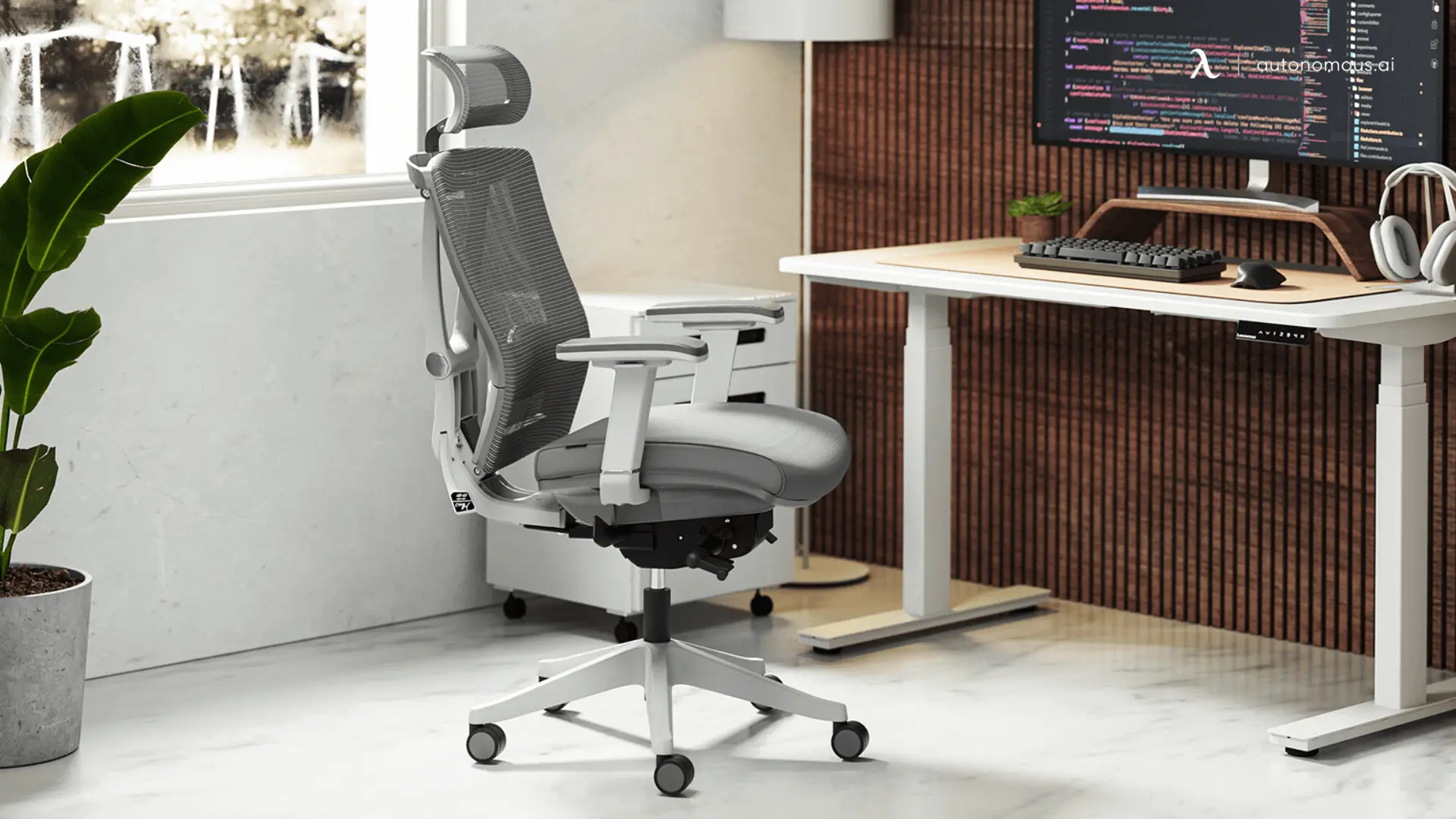
Virtual Office Requirements (What You Need To Get Started)
Building a virtual office isn’t just about comfort—it’s about having the right systems in place to maintain professionalism and productivity. Here’s what you’ll need to launch with confidence:
1. Essential Equipment
At a minimum, your virtual office requirements include:
- A capable computer with an up-to-date OS and sufficient RAM.
- A high-quality webcam or a conference camera, a microphone, or a headset with noise-canceling capabilities.
- Reliable internet with upload speeds over 10 Mbps for video calls.
- Cloud storage solution (Google Drive, Dropbox, or OneDrive).
2. Recommended Add-Ons
A comfortable, quiet workspace is part of your virtual office requirements, especially if you plan to work long hours or host client meetings. This includes proper lighting, acoustics, and seating.
- Ergonomic office chair with lumbar support
- Standing desk or desk riser, if you’re new to this innovative work journey with standing desks, you can start with our guide for a good standing desk setup.
- Dual monitor stand for multitasking
- Noise-canceling headphones and a microphone for your professional meeting with clients.
- A cable management system to keep your desk setup cluttered and organized.
These upgrades help you work longer and more efficiently without burnout.
3. Digital Services & Subscriptions
If you're figuring out how to set up a virtual office business, you'll need:
- Virtual Business Address: Useful for LLCs or corporations needing a professional business mailing address and a domain while working from home (Gmail for Business, Zoho Mail, etc.). Providers include Regus, Alliance Virtual Offices, and iPostal1.
- Billing Software: QuickBooks, FreshBooks, or PayPal Business.
- Business Phone System: VoIP platforms like Google Voice, KrispCall, Grasshopper, or OpenPhone allow you to separate personal and work communication.
4. Legal And Compliance Considerations
If you're figuring out how to set up a virtual office business, you'll need:
- Register your business with local authorities using a virtual office address (check if this is allowed in your jurisdiction).
- Use tax software or a professional accountant to keep track of remote work deductions.
- Review compliance for client data security (especially in healthcare, finance, and legal sectors).
Tip: Some states and countries have specific requirements for remote worker compensation, liability, or insurance. Research local laws or consult a legal advisor if you're managing a team remotely.
5. Security
Part of modern virtual office requirements involves cybersecurity. You'll need to protect client data, implement password policies, and possibly comply with regulations like GDPR or HIPAA, depending on your industry.
- Password Hygiene: Use a strong open source password manager and enable 2FA across all your work apps.
- Device Protection: Install endpoint security software and make sure your devices can be remotely wiped if lost.
Whether you’re freelancing or scaling a remote brand, understanding these virtual office requirements will save you time and ensure you’re legally and technically set up for success.
Best Practices For Virtual Office Productivity
Even with the perfect gear, you still need good habits to stay on track.
- Focus Strategies: Try the Pomodoro technique (25 mins work, 5 mins break) or time-blocking with digital calendars.
- Task Management Tools: Apps like Todoist, Notion, or Sunsama help you plan and track your work day by day.
- Virtual Boundaries: Just because your office is always there doesn’t mean you should be. Use do-not-disturb settings, schedule breaks, and actually log off.
- Async Communication: Don’t default to meetings. Leave detailed updates, use Loom for quick video memos, and reduce your dependence on live responses.
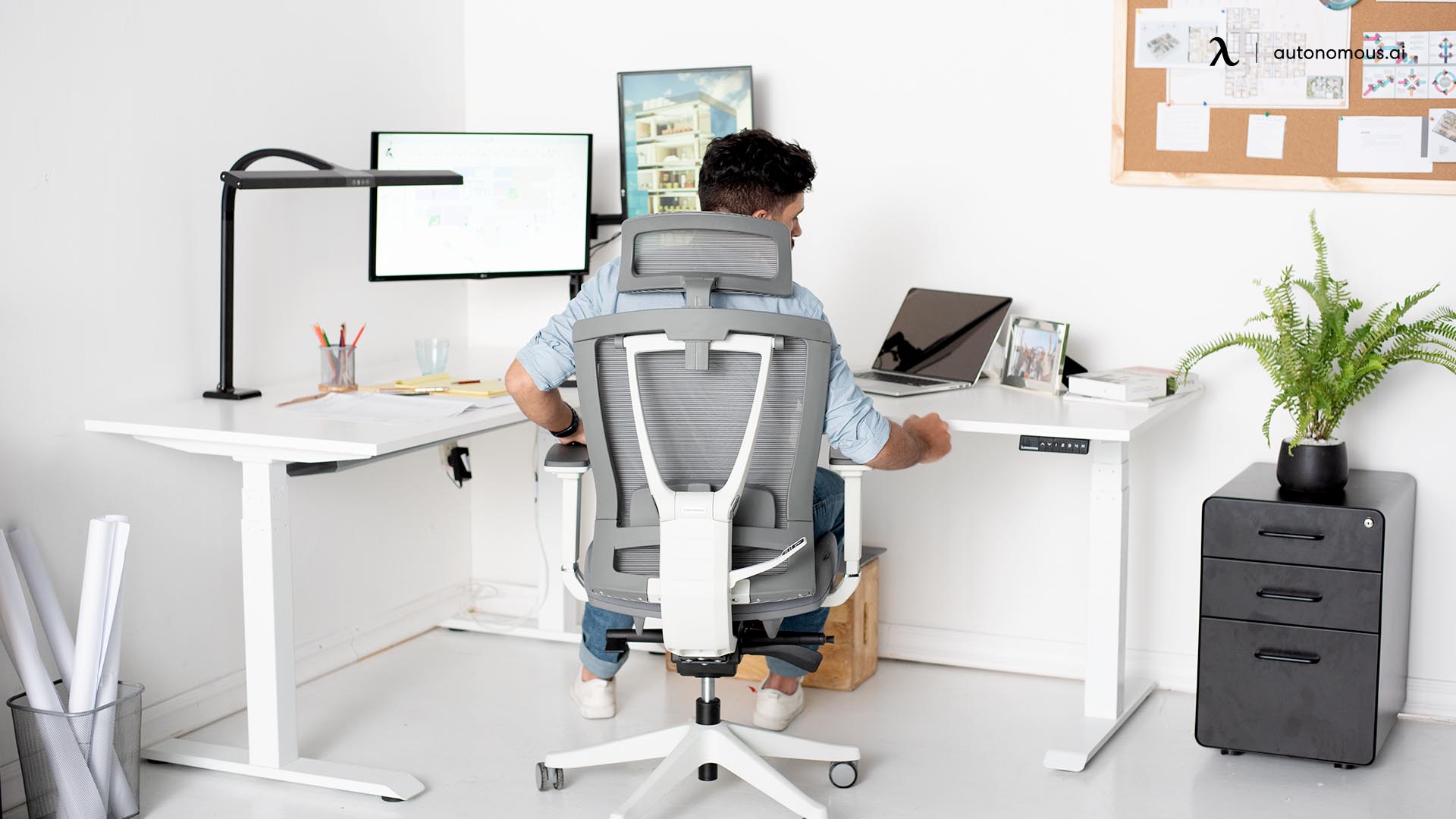
FAQs
1. How do I set up a virtual office?
Start by identifying your work needs, then build your setup around them. At minimum, you’ll need a reliable computer, webcam, microphone, high-speed internet, and cloud storage. From there, choose communication tools (like Zoom or Slack), task management platforms (such as Trello or Notion), and ensure your workspace supports comfort and productivity.
If you're a business owner, consider using a virtual address and VoIP phone service to maintain a professional presence.
2. Is a virtual office legal in the USA?
Yes, virtual offices are legal in the U.S. for both individuals and companies. However, if you plan to use a virtual address to register a business, you must use a provider that offers a commercial business address and not just a mailbox. Ensure the provider complies with state laws, particularly for licensing, mail forwarding, and tax filing purposes.
3. What are two disadvantages of a virtual office?
- Lack of physical collaboration:
While video calls and chat apps help, some teams may miss the spontaneous brainstorming and quick in-person problem-solving found in a physical office.
- Perceived professionalism:
In some industries, not having a brick-and-mortar office may raise concerns with clients or partners who expect a physical presence. This can be addressed by using a premium virtual office service with meeting room access and business support.
4. What’s the best virtual office tool?
It depends on your needs:
- For communication: Slack or MS Teams.
- For project management: Notion or ClickUp.
- For full virtual presence: Try Gather or Sococo.
5. Can a virtual office replace a physical one?
Yes—for many industries, it's already doing that. Some hybrid models still use shared office days, but full-remote is sustainable with the right setup.
6. What’s the cost of a basic virtual office setup?
A basic virtual office setup can be done under $500 if you already own a laptop. For a full, ergonomic, productivity-optimized setup with business tools, expect to invest between $1,500 and $3,000.
7. Is a virtual office legal for registering a business?
In most jurisdictions, yes—especially when using a virtual office provider that offers mail handling and a physical address. Check with your state or country for exact rules.
Conclusion
A virtual office setup isn’t just about working from anywhere—it’s about working smarter from wherever you are. With the right tools, good habits, and a comfortable space, you can recreate the efficiency of a traditional office (minus the commute) and even surpass it.
Whether you're building a team across time zones or launching your solo venture from a small studio, this guide should help you get the structure, tools, and peace of mind to create the virtual office that truly works.
Spread the word
.svg)







